 |
Interior
|
 |
Hearth--that is, peat coals burning in the middle of the floor --no chimney;
easier to smoke fish that way... |
 |
Box beds
|
 |
Of course, the animals lived under the same roof too
|
...recounts the retirement travels of Mark and Vicki Sherouse since 2008...in Asia and the Pacific, New Zealand, Europe, South America, and Africa, as well as the US and Canada. Our website, with much practical information, is: https://sites.google.com/site/theroadgoeseveron/.Contact us at mark.sherouse@gmail.com or vsherouse@gmail.com.
 |
Interior
|
 |
Hearth--that is, peat coals burning in the middle of the floor --no chimney;
easier to smoke fish that way... |
 |
Box beds
|
 |
Of course, the animals lived under the same roof too
|
 |
Doune Broch |
 |
Interior....beautiful dry stone work, here as at other places |
 |
Interior staircase (that is, between the inner and outer walls) |
 |
Model of Callanish from visitor center...cruciform, avenues, circle, etc. |
 |
Beautiful rock |
 |
View from the "natural" temple |
 |
 |
Part of circle and transept |
 |
Vicki |
 |
Us |
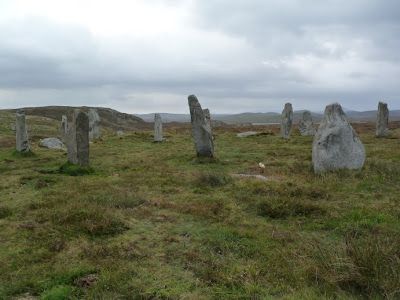 |
Ceann Hulavig, about 2 miles from the main Callanish site
|
 |
Vicki at Cnoc Ceann a'Gharraidh
|
 |
Cnoc Fillibhear Bheag
|
 |
Interesting stile joining the latter two properties...at the bottom, neolithic builders
|
 |
On the west of Skye, the Talisker Distillery, one of the great ones |
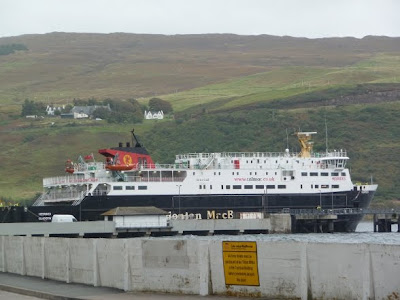 |
Our ferry, the MV Hebrides |
 |
Isles and skerries in the Little Minch, which separates Skye and the outer islands |
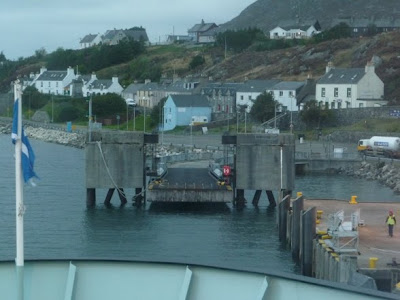 |
Cleared for landing, final approach to Tarbert... |
 |
They were towing this interesting device |
 |
All our Montana friends hunt in neck-ties, too |
 |
Little Guinard Beach, where we lunched
|
 |
Loch Ewe; last refueling for the 600 ships that did the Murmansk Run in WWII;
the pier is a NATO refueling site |
 |
Loch Maree
|
 |
Mountains around Loch Maree
|
 |
Lay-by overlooking Loch Carron
|
 |
The beach at Bettyhill
|
 |
Fishing on the Naver
|
 |
Western Highlands
|
 |
Loch Naver
|
 |
Very old Mackay burial site
|
 |
Vicki at the site
|
 |
The ruined dolmen
|
 |
Mackay Country
|
 |
Right on the coast |
 |
Just about every other headstone is a Mackay |
 |
Neolithic beaker, found in the vicinity |
 |
By order of the Queen (apparently Highlanders threw rocks at the telegraphs) |
 |
Mackay crest and tartan (modern) |
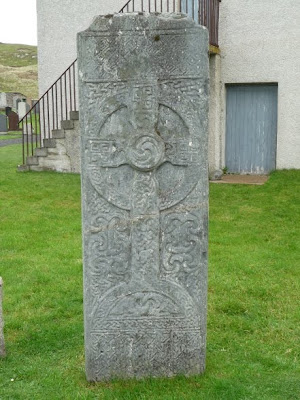 |
The Farr Stone, a Pictish stone in the cemetery, 7th or 8th century |
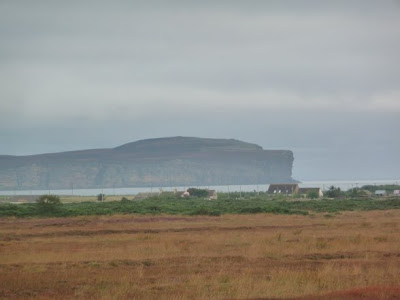 |
Dunnet Head, the real Land's End of Scotland and the British Isle; didn't go there; after Nordkapp, we're unimpressed |
 |
Seals at sunset on Gills Bay, between Dunnet and John O' Groats |
 |
Further on down the road all the original fences are in big slate slabs; this one with a charming but de-commissioned nuclear reactor in the background |